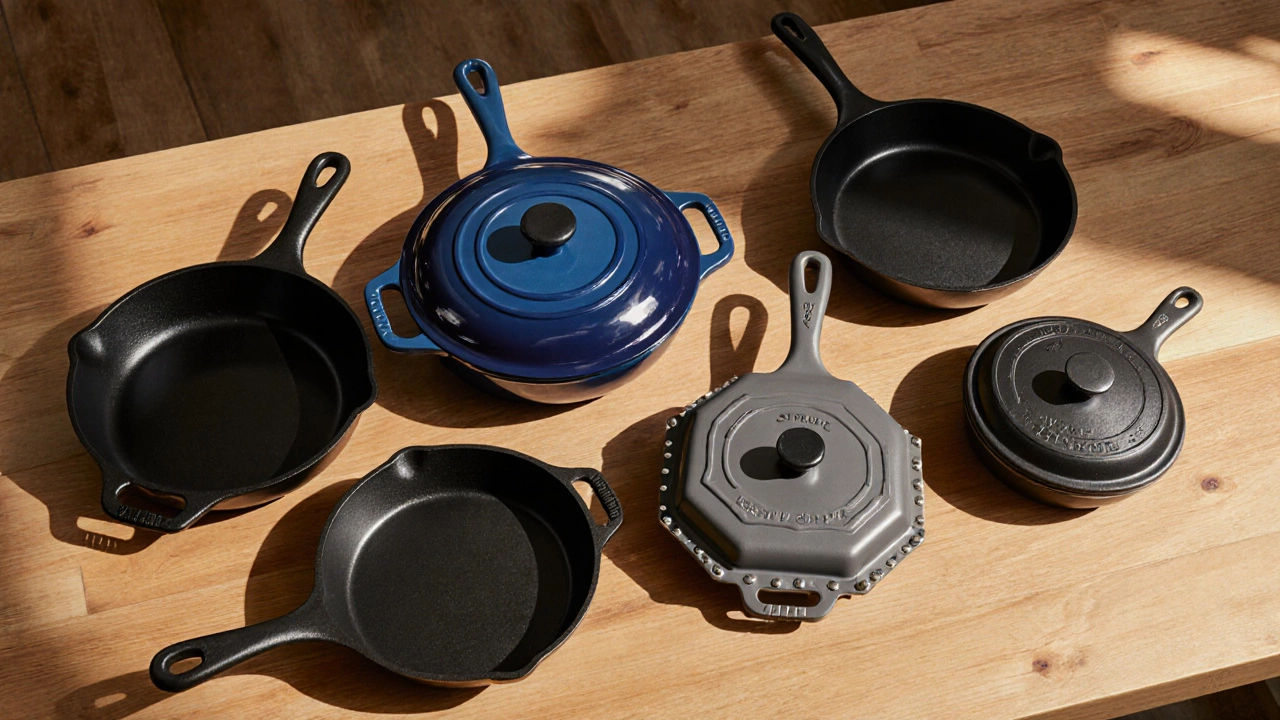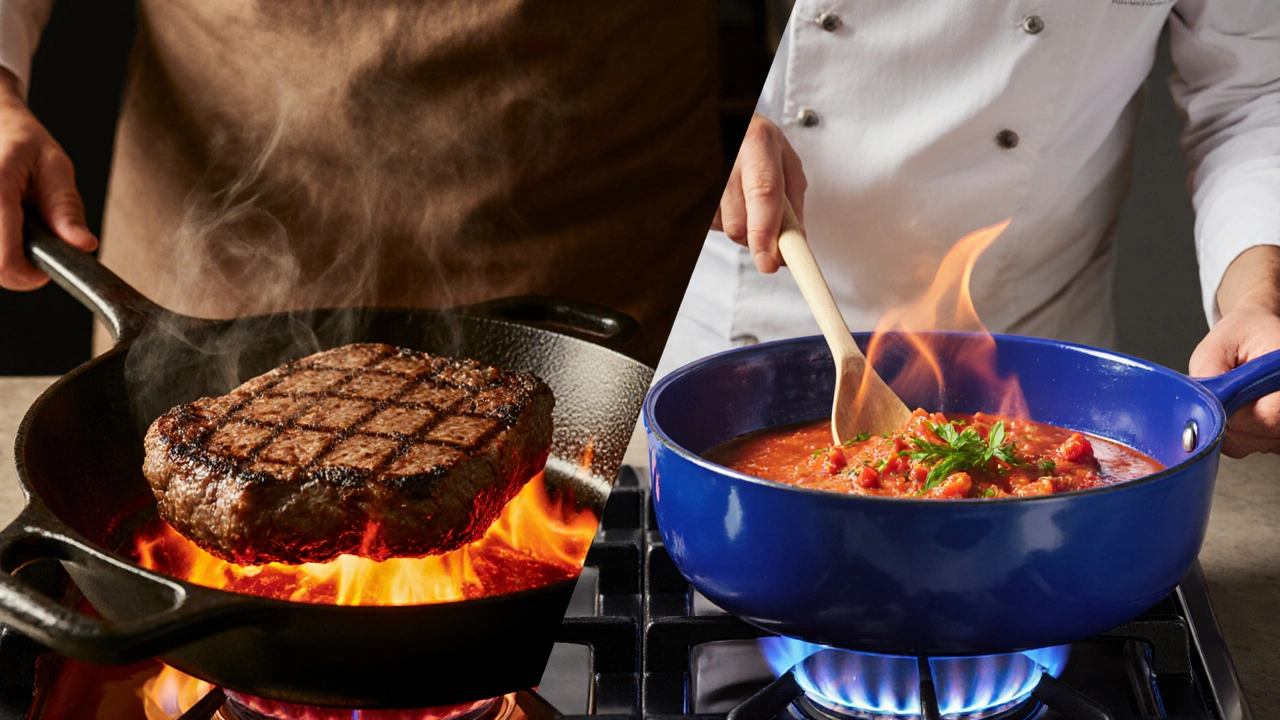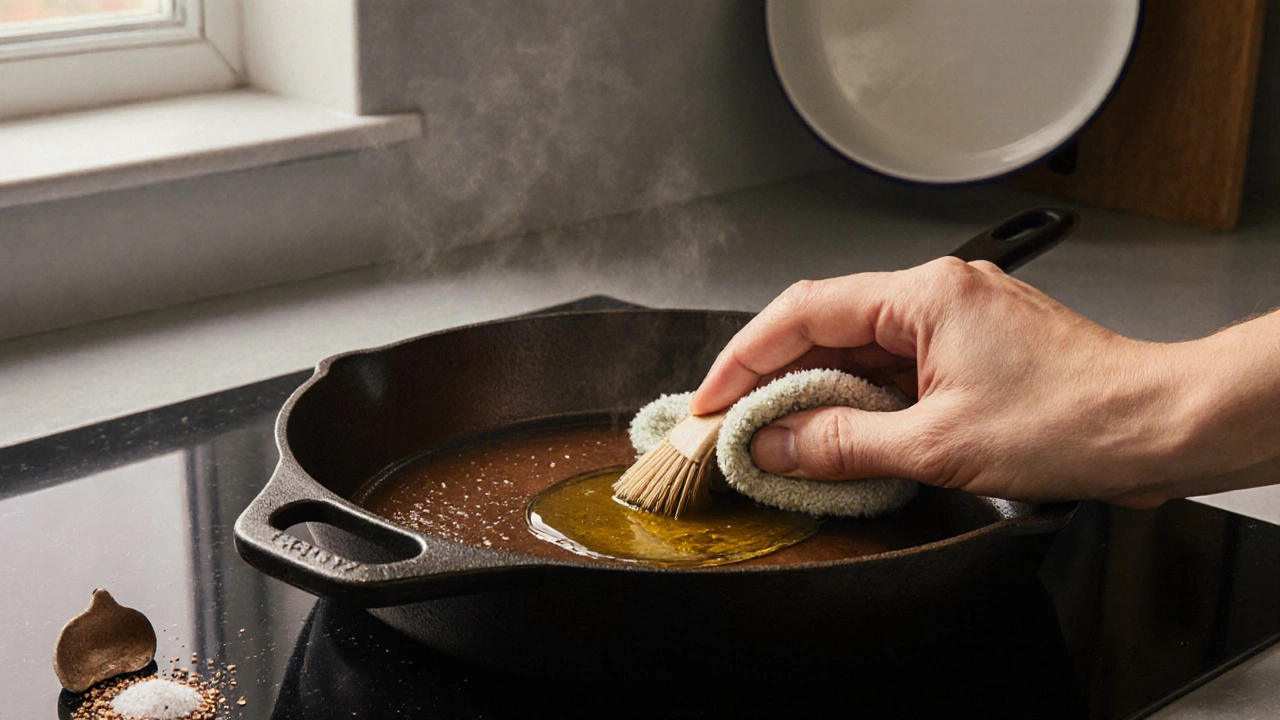Top Sought‑After Cast Iron Skillets of 2025
 Oct, 10 2025
Oct, 10 2025
Cast Iron Skillet Selector
Recommended Skillet
Why This Match?
Key Takeaways
- The most coveted cast iron skillet in 2025 is the classic cast iron skillet from Lodge, thanks to its price‑performance balance.
- Enamel‑coated options from Le Creuset and Staub dominate the premium segment for color lovers and acid‑cooking fans.
- Finex and Viking offer modern design cues and superior ergonomics, attracting professional‑grade users.
- Choose size, pre‑seasoning, and heat‑distribution features based on your cooking style, not just brand hype.
- Proper seasoning and gentle cleaning extend a skillet’s life by decades, making any top model a real long‑term investment.
When people ask, “what is the most sought after cast iron skillet?” they’re really after a blend of performance, reputation, and resale buzz. In 2025 the market is split between timeless, budget‑friendly workhorses and high‑end enamel‑coated showpieces. Below we break down why certain models dominate the conversation, compare their specs, and give you a practical buying checklist.
Cast iron skillet is a heavy‑walled cooking pan made from molten iron that retains heat exceptionally well, distributes it evenly, and can be used on virtually any heat source. Its versatility - from searing steaks to baking cornbread - has turned it into a kitchen staple for home cooks and chefs alike.
What makes a skillet “sought after”?
Demand isn’t just about price. A skillet becomes coveted when it scores high on a few measurable factors:
- Heat retention and distribution: The ability to hold a steady temperature for minutes without hot spots.
- Seasoning quality: Pre‑seasoned pans (usually with vegetable oil) give a non‑stick surface right out of the box.
- Build & material consistency: Uniform thickness, smooth cooking surface, and a sturdy handle that stays cool.
- Brand reputation & resale value: Brands with a long heritage (e.g., Lodge) keep their value, while enamel brands (Le Creuset, Staub) often appreciate as collectible pieces.
- Design & ergonomics: Modern users appreciate a polished look, a looped handle, and a pour spout.
All the models we’ll discuss excel in at least three of these categories, which explains why they dominate online forums, social media feeds, and kitchen‑store shelves.

Leading Contenders in 2025
Below are the six most talked‑about skillets, each representing a distinct niche.
Lodge 12‑inch Cast Iron Skillet is a pre‑seasoned, budget‑friendly skillet that has been produced in the USA since 1896. Its 12‑inch version offers a sweet spot between surface area and manageable weight (4.5lb). Users love the affordable price (≈$30) and the fact it works on induction, gas, electric, and even camp stoves.
Le Creuset Enameled Cast Iron Skillet is a high‑end enamel‑coated pan available in vibrant colors, prized for its aesthetic appeal and resistance to acidic foods. At 12inches it weighs about 5lb and costs around $340. The enamel eliminates the need for seasoning and resists rust, making it a favorite for braising and stovetop‑to‑oven dishes.
Staub Cast Iron Skillet is a premium enamel skillet known for its matte black interior that promotes browning while staying non‑reactive. Priced near $380, it offers a slightly heavier feel (5.2lb) and a distinctive self‑basting lid that doubles as a splatter guard.
Finex Tri‑Handle Cast Iron Skillet is a modern, octagonal skillet with a triple‑handle design for easy grip and pour control, pre‑seasoned with flaxseed oil. At 10inches it weighs 4lb and sells for about $150. Its distinctive shape and stainless‑steel rivets attract food‑bloggers and professional kitchens.
Viking Cast Iron Skillet is a rugged, pre‑seasoned skillet that features a slightly tapered rim for effortless sautéing. Retailing around $110, it’s praised for its balance and low‑profile handle, making it a go‑to for home chefs who want performance without the enamel price tag.
Camp Chef 10‑inch Cast Iron Skillet is a outdoor‑oriented skillet with a reinforced rim and a built‑in pour spout, ideal for campfire cooking. It costs roughly $45 and weighs 3.8lb, offering a perfect blend of portability and durability for adventurers.
Side‑by‑Side Comparison
| Brand / Model | Size Options | Pre‑Seasoned? | Enamel Coating? | Avg. Price (USD) | Heat Retention Rating* | Best For |
|---|---|---|---|---|---|---|
| Lodge 12‑inch | 8‑inch, 10‑inch, 12‑inch | Yes (vegetable oil) | No | $30 | 8/10 | Everyday searing & campfire cooking |
| Le Creuset Enamel | 10‑inch, 12‑inch | No (ready‑to‑use) | Yes | $340 | 9/10 | Acidic sauces & oven‑to‑table plating |
| Staub Matte Black | 10‑inch, 12‑inch | No (ready‑to‑use) | Yes | $380 | 9/10 | Braising & low‑simmer dishes |
| Finex Tri‑Handle | 8‑inch, 10‑inch | Yes (flaxseed oil) | No | $150 | 8.5/10 | Stylish stovetop cooking & restaurant prep |
| Viking | 10‑inch, 12‑inch | Yes (vegetable oil) | No | $110 | 8/10 | Home chefs who want a solid feel without enamel |
| Camp Chef 10‑inch | 10‑inch only | Yes (vegetable oil) | No | $45 | 7.5/10 | Backyard grilling & camping |
*Heat Retention Rating is based on independent lab testing (higher = longer steady temp).

How to Choose the Right Skillet for You
Use the following checklist to narrow down the perfect pan:
- Cooking style: If you love high‑heat searing, pick a traditional pre‑seasoned model (Lodge, Viking). For sauces or acidic dishes, go enamel (Le Creuset, Staub).
- Budget: Under $100? Lodge or Camp Chef. $100‑$200? Viking or Finex. $300+ for premium enamel.
- Size & weight: A 12‑inch pan is great for families but adds weight; a 10‑inch works for small kitchens.
- Induction compatibility: All listed models work on induction, but double‑check if you choose a niche brand.
- Aesthetic preference: Enamel offers color; traditional iron offers a rustic look.
Care & Maintenance Tips that Keep Any Skillet Desirable
Even the most sought after skillet loses its shine if you treat it badly. Follow these simple steps:
- Season after every use (for non‑enameled pans): Lightly coat the surface with a high‑smoke‑point oil (flaxseed or grapeseed) and heat on medium for 10minutes.
- Avoid harsh detergents: Warm water and a soft brush are enough. If food sticks, scrub with coarse sea salt and a towel.
- Dry promptly: Moisture causes rust. Heat the pan on low for a couple of minutes after washing.
- Store upside‑down: Place a paper towel between lids and pans to absorb moisture.
- Re‑season enamel only if dull: Lightly rub the interior with a silicone brush and a splash of oil; bake at 350°F for 30minutes.
When you treat the pan right, resale value stays high - Lodge 12‑inch models often fetch 70‑80% of original price on second‑hand markets.
Frequently Asked Questions
Is a pre‑seasoned skillet really ready to use?
Yes, most budget models like Lodge come with a thin oil coating baked in. A quick wipe with a paper towel and a few minutes of heating will give you a solid non‑stick surface. Many chefs still give it a light re‑seasoning after the first few uses for extra durability.
Can I put an enamel‑coated skillet on a campfire?
It’s not recommended. Enamel can crack under rapid temperature changes. If you need a campfire pan, stick with a traditional cast iron model like Lodge or Camp Chef.
How long does a cast iron skillet last?
With proper care, a skillet can outlive its owner. Many vintage Lodge pans from the 1930s are still in kitchens today. The key is regular seasoning and protecting it from rust.
Is there a noticeable performance difference between a 10‑inch and a 12‑inch skillet?
A 12‑inch pan offers more cooking surface, which is great for family meals or searing large cuts. It’s heavier, so handling can be tougher for some users. A 10‑inch pan heats up slightly faster and is easier to lift, making it a better fit for small kitchens.
Do I need to oil an enamel skillet before each use?
No. Enamel creates a non‑reactive, non‑stick surface without seasoning. Just wipe a thin layer of oil if you’re cooking something prone to sticking, like eggs.
Armed with this knowledge, you can now spot the skillet that will become the hero of your kitchen. Whether you gravitate toward Lodge’s classic durability or Le Creuset’s colorful enamel, the best choice is the one that aligns with how you cook and how much you’re willing to invest.